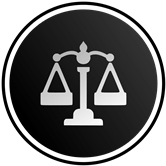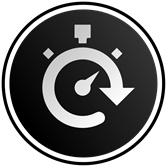Updated on November 13, 2025 04:56:29 PM
The POCSO Act, 2012, is a crucial legal framework that aims to protect children from sexual assault, exploitation and harassment. As per the NCRB (National Crimes Records Bureau), every second child experiences sexual abuse and violence in India. The number of cases related to child abuse has been increasing day by day, as we see in the day’s news. Therefore, getting a better understanding of the POCSO Act helps to fight against this heinous crime and build a safe environment for children's development.
However, the POCSO Act not only defines the offence but the types and punishment also. In this blog section, we will go through a comprehensive understanding of the POCSO Act, its meaning, the types of offences it covers and its punishments. Whether you are parents, guardians or someone seeking to understand the protective mechanism, this reading will help you to go through it comprehensively.
Get to know these below-mentioned key highlights before further understanding:
POCSO Act, 2012 is a thorough piece of legislation in india that aims to provide legal protection to children against sexual harassment, abuse, pornography and exploitation. Every child whether girls or boys can be a victim under POCSO Act.
Every stage of the judicial process must be child-friendly according to the POCSO Act. In POCSO cases, special courts are set up, the child's identity is protected, and evidence is recorded in a trauma-reducing manner.
| POCSO Offence Type | Description | Punishment |
|---|---|---|
| Sexual Harassment | Acts with sexual intent, such as inappropriate language, body language, exposure, following, threats with explicit images, showing pornographic content, or manipulating someone into seeing pornography. | Imprisonment for 3 years or fine. (Under section 12 of the POCSO Act) |
| Penetrative Sexual Assault | Any type of oral or sexual contact with a child's genitalia or anus, using the perpetrator's body parts or objects, or forcing the child to do so. |
|
| Aggravated Penetrative Sexual Assault | When public servants, armed forces, police officers, educators, religious workers, or institutional employees engage in penetrative sexual assault. | 20 years, life imprisonment, and death along with a fine. (Under section 6 of the POCSO Act) |
| Sexual Assault | Sexual assault occurs when someone touches a child's vagina, penis, anus, or breast with the intent to make them touch it, or engages in non-penetrative physical sexual contact. | Minimum sentence of 3 to 5 years along with a fine. (Under section 8 of the POCSO Act) |
| Aggravated Sexual Assault | Acts involving police officers, military personnel, public employees, or family members, involving weapons, repeated assaults, or mental/physical incapacitation. | Minimum sentence of 5 to 7 years along with a fine. (Under section 10 of the POCSO Act) |
| Use of Child for Pornography Purpose | Depicting sexual organs, simulated sexual acts, or displaying indecent representations of children. | Minimum 5 years of imprisonment along with a fine. (Under section 14 of the POCSO Act) |
The Protection of Children from Sexual Offences (POCSO) Act of 2012 is a milestone in safeguarding the rights and well-being of children. Sexual offences against minors are defined and punished stringently under the Act, serving as a deterrent against such heinous offences. To ensure the effective protection of children from exploitation and abuse, awareness, implementation, and enforcement must be continually improved. Societies, authorities, and stakeholders must uphold the principles of child safety and justice enshrined in the POCSO Act, providing an environment where all children can flourish without the threat of sexual abuse.

Legal Consultation

Expert Lawyers

Lowest Fees

Quick Process
The POCSO Act (Protection of Children from Sexual Offences Act), 2012, is a law designed to protect children from sexual abuse, sexual harassment, and pornography, ensuring child-friendly legal procedures for justice.
In 2012, the POCSO Act came into existence for the protection of children from sexual harassment, exploitation, pornography and assaults.
There are 46 sections in the POCSO Act that cover the various aspects of sexual offences against minors, their definitions, penalties and legal procedures.
Under the POCSO Act, a child refers to any individual who is below the age of 18.
There are several reasons why the POCSO Act is so important. The law ensures the safety and well-being of children by protecting them from sexual offences. A law that defines different types of abuse and defines strict penalties for perpetrators acts as a deterrent against them. It also promotes awareness and enables victims to seek justice, thus protecting children's rights and preventing exploitation.
Disclaimer: The content provided on this site is intended for informational purposes only. Accessing or utilizing this site and its materials does not establish an attorney-client relationship. The information contained herein does not constitute legal or professional advice and should not be relied upon as such. It is not a substitute for obtaining legal counsel from a qualified attorney licensed in your jurisdiction